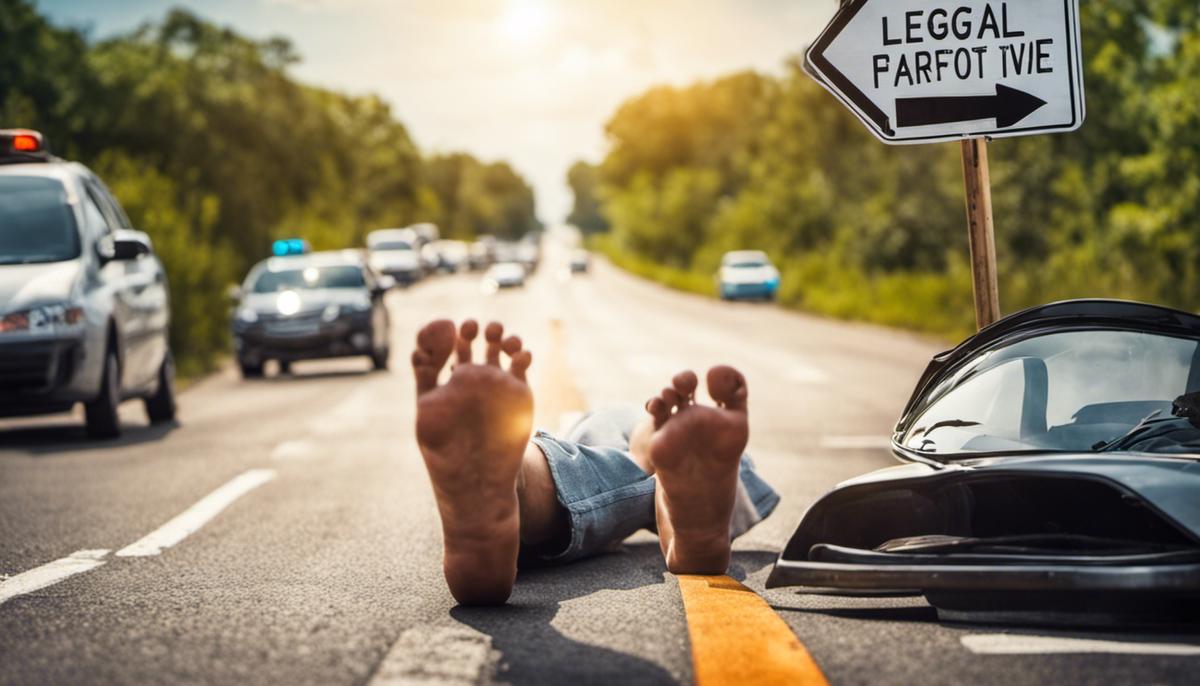When it comes to operating a motor vehicle, safety and adherence to the law are indispensable. One aspect of driving that’s often overlooked, yet sparks heated debate, is that of footwear – specifically, the act of driving barefoot. A question that frequently surfaces is: is it illegal to drive barefoot? Delving into the myriad state laws and traffic regulations across the United States is key to comprehending the legal perspective on this matter. Moreover, an in-depth understanding of the safety implications associated with barefoot driving, underpinned by accident rates, expert opinions, and recommendations from esteemed driving safety organizations, can further shed light on this complex issue.
Legal perspective on driving barefoot
The Myth of Barefoot Driving
Despite popular belief, driving barefoot is not illegal in any of the 50 states in the U.S. There are no existing laws or regulations prohibiting the absence of footwear while operating a motor vehicle. States, such as Alabama, do have laws related to distracted driving and reckless endangerment that could potentially apply to situations involving footwear, but none specifically mention driving barefoot as a violation. For reference, the Alabama State trooper has published guidance confirming that driving barefoot is indeed legal, and this is representative of general policy across the U.S. (source: Alabama State Trooper)
Potential Concerns
While it might not be illegal, safety organizations, including AAA, often advise against it. The main argument against barefoot driving is that a person’s feet could potentially slip off the pedals, or that they might not be able to apply enough pressure to the brake or gas pedals without the assistance of shoes. There is also the risk of injury in case of an accident or even while walking barefoot to and from the car. This informational page on the AAA website (AAA Exchange – Proper Footwear) underlines those safety concerns from driving barefoot or with flip-flops. Despite these risks, no state has taken legislative action to officially ban driving without shoes.
Driving barefoot is a subject of much debate, mainly revolving around safety and legal concerns. Although it’s always safer and more comfortable to wear footwear while driving, it’s important to note that there are no particular laws prohibiting barefoot driving. Knowing this helps eliminate any confusion and enables individuals to make informed decisions about their choice of driving footwear.

Safety aspects of driving barefoot
The Potential Dangers of Driving Barefoot
Despite the absence of laws against it, driving barefoot does pose its own set of challenges and potential risks. Without footwear, there’s a possibility for the driver’s foot to slide off the pedals, potentially causing a dangerous situation on the road. In addition, driving sans shoes could compromise the driver’s control over the pedals, particularly during sudden or forceful braking. Benjamin Leitz, a seasoned driving instructor with two decades of experience, observes, “Driving entails consistent, precise control over the vehicle’s pedals – a control that could be undermined when driving barefoot.”
Accident Rates and Final Thoughts
While exact data on accident rates caused by barefoot driving is elusive, anecdotal evidence and expert opinion suggest that it poses unnecessary risk. Insurance companies, such as AAA, express concerns over the lack of control barefoot drivers may have. They’ve published various articles detailing the potential danger barefoot driving can pose, recommending the use of suitable footwear for better control over the pedals. However, as per American law and across most states, it is not technically illegal to drive barefoot. Yet, the potential risks and safety concerns associated with it make driving with suitable footwear the safer option to rely on.

Whether or not it’s declared illegal to drive barefoot in your state, the crux of the matter lies in the issue of safety. Keen insight into accident rates, the stance of driving safety organizations, and expert analyses underscore the ambiguity and controversy surrounding this topic. Ultimately, the choice to drive barefoot should hinge on practicality, safety, and individual comfort rather than the blurred lines of legality. Awareness and understanding of the potential risks are critical for maintaining safety on the road and making informed decisions. As we navigate through this maze of information and opinions, it is imperative to remember that every choice we make behind the wheel impacts not only our safety but also the safety of others on the road.
